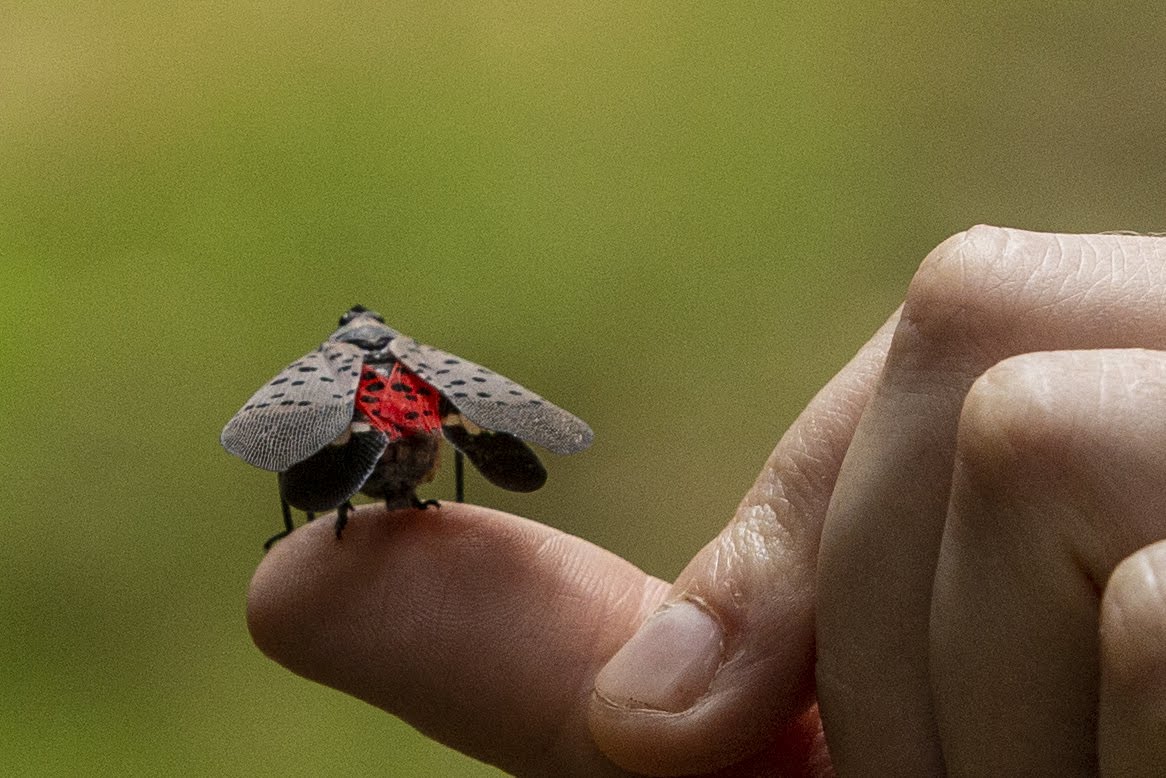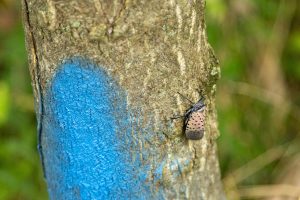Delaware expands spotted lanternfly quarantine in New Castle County

DOVER, Del. – The Delaware Department of Agriculture (DDA) announced today that they expanded the spotted lanternfly quarantine to include all portions of New Castle County north of the Chesapeake and Delaware Canal. This is due to recent detections of established populations outside of the initial quarantine zone enacted in February 2019 that included eleven zip codes.
 “This expansion is necessary in our attempt to eradicate, control, and prevent the spread of spotted lanternfly in Delaware and to surrounding states. Along with conducting surveys, our Plant Industries inspectors, in conjunction with USDA contractors, have treated 19,685 trees in the initial quarantine zone, encompassing 130 properties,” said Secretary of Agriculture Michael T. Scuse. “With the current presence of adult lanternflies, Delawareans have been actively reporting sightings of this pest over the past two weeks, including areas in the original quarantine zone as well as new sites in New Castle County. Our inspectors investigated these reports and determined established populations of spotted lanternfly were present at these new sites, thus requiring us to expand the quarantine.”
“This expansion is necessary in our attempt to eradicate, control, and prevent the spread of spotted lanternfly in Delaware and to surrounding states. Along with conducting surveys, our Plant Industries inspectors, in conjunction with USDA contractors, have treated 19,685 trees in the initial quarantine zone, encompassing 130 properties,” said Secretary of Agriculture Michael T. Scuse. “With the current presence of adult lanternflies, Delawareans have been actively reporting sightings of this pest over the past two weeks, including areas in the original quarantine zone as well as new sites in New Castle County. Our inspectors investigated these reports and determined established populations of spotted lanternfly were present at these new sites, thus requiring us to expand the quarantine.”
The spotted lanternfly is a destructive invasive plant hopper that attacks many hosts including trees, shrubs, orchards, grapes, and hops. The insect is detrimental to Delaware’s agricultural industry, forests, and residential areas. Due to quarantines in other states, interstate commerce will be impacted if the pest is transported out of the Delaware quarantine area.
The quarantine can expand if there is reason to believe that the pest has moved to a non-quarantined area. A quarantine means that any material or object that could harbor the pest cannot be moved without taking precautions to prevent the spread. Adults can fly, hop, or drop onto a vehicle – meaning that this pest can easily be transported to new areas where it can create another infestation.
“We have heard from many residents who are seeing an abundance of adult spotted lanternfly and are overwhelmed by their presence and want to know what they can do,” said DDA Plant Industries Administrator Jessica Inhof. “We realize that residents cannot kill all of them, but even stomping on one makes a difference. We want to decrease the number of female spotted lanternfly available to lay egg masses, which will directly impact the population that hatches out in the spring.”
Beginning at the end of September, the female spotted lanternfly will lay several egg masses of 30 to 50 eggs wherever it chooses, especially on flat surfaces. Eggs will survive the winter and nymphs will hatch out beginning the end of April 2020. Residents can help by scraping off egg masses into a bag containing rubbing alcohol or an alcohol-based hand sanitizer and crushing them to destroy the eggs.
Any person conducting business for a commercial business, a municipality, or a government agency that requires movement of any regulated item within or from the quarantine area must have a permit, available through the DDA spotted lanternfly website. To obtain a permit, a designated individual from an organization must receive training and pass an online test to demonstrate a working knowledge and understanding of the pest and quarantine requirements. Training of other employees, inspection of vehicle and products, and removal of living stages of spotted lanternfly must be completed. The permit demonstrates the individual understands how to identify the pest and can ensure the items transported are not carrying the insect.
To move regulated items, the general public is encouraged to download and print a residential compliance checklist indicating that you inspected, and know that no living life stage of the spotted lanternfly is present, on regulated articles before moving them. The checklist is available online at https://de.gov/hitchhikerbug. DDA recommends keeping the checklist in the glovebox of each vehicle and dating when specific items on the list are inspected prior to transporting.
Examples of regulated articles include:
- Any living life stage of the spotted lanternfly
- Landscaping, remodeling, or construction materials
- Firewood of any species
- Packing materials (e.g. wood crates, boxes)
- All plants and plant parts including all live and dead trees, perennial and annual plants, and mulch
- Outdoor household articles like RVs, lawnmowers, chairs, grills, tarps, tile, stone, deckboards, and other vehicles not stored indoors.
For more detailed information regarding the quarantine, permitting, treatment, or to report a sighting of spotted lanternfly, visit the Delaware Department of Agriculture’s dedicated spotted lanternfly webpage at https://de.gov/hitchhikerbug or call the dedicated spotted lanternfly hotline at (302) 698-4632. When leaving a message, leave your contact information and, if reporting a sighting, please provide the location of the sighting.
###
Media Contact: Stacey Hofmann, (302) 698-4542, Stacey.Hofmann@delaware.gov
Legal Disclaimer:
EIN Presswire provides this news content "as is" without warranty of any kind. We do not accept any responsibility or liability for the accuracy, content, images, videos, licenses, completeness, legality, or reliability of the information contained in this article. If you have any complaints or copyright issues related to this article, kindly contact the author above.
